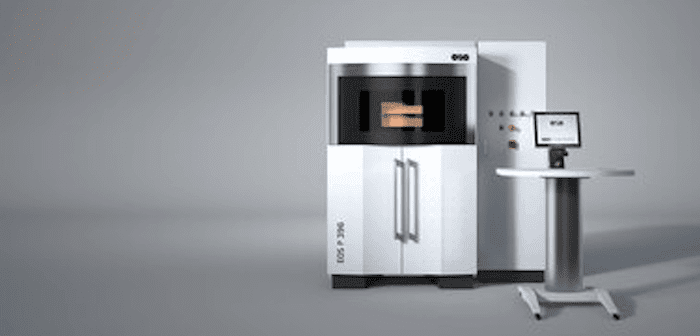Etihad Engineering, the Abu Dhabi-based commercial aircraft MRO services provider, has entered into an R&D collaboration agreement for 3D-printing aircraft interior parts. The company will work with EOS, an international supplier of industrial 3D printing technologies, and Baltic3D.eu, one of the largest industrial 3D printing centres in Northern Europe, on a project titled ‘FDM and SLS industrial 3D printing technology applicability in serial manufacturing of aircraft interior parts’.
Baltic3D will use aerospace-qualified Laser Sintering (LS) technology from EOS, among other powder-bed solutions, while Etihad Engineering will be supporting the joint R&D efforts by conducting flammability testing at its on-site flammability laboratory, and providing engineering analysis and reports on the designs and prototypes produced within the project.
As part of the project Baltic3D will 3D-print more than 2,000 material coupons using LS technology, on EOS’s P 396 machines. These material samples will be tested at the Etihad Engineering flammability laboratory in Abu Dhabi, in accordance with aviation standards, including FST and heat-release tests. Prototypes for aircraft interior part designs will then be created using LS technology.

Janis Jātnieks, co-founder of Baltic3D stated, “From part design to the end-part manufacturing and certification, the aviation supply chain is heavily hit by Covid-19. With this R&D project we aim to significantly reduce time and money for design organisations and OEMs. [They] have to invest to add additive manufacturing as additional manufacturing route to existing production or even to completely switch to complex parts production using AM (additive manufacturing). Our plan is to establish a comprehensive test and manufacturing data set that would help aerospace engineers to develop part designs for AM with a high level of confidence.”
Markus Glasser, SVP for EMEA at EOS added, “Over the last few years we have managed to fully qualify our technology – meaning qualified materials, processes and systems for the aerospace world. Aerospace demands reliable data, which is the primary aim of this project, and thereby we firmly believe that this project will substantially accelerate the adoption of AM in aerospace.”
Glasser added, “Baltic3D intends to increase the access of 3D printing know-how and test results to make adoption of industrial 3D printing faster and easier for any aviation company. We share the same mindset as both of our companies are committed to highest quality solutions for our customers, as well as constant technology innovation and cost reduction for complex parts. We look forward to support Baltic3D and Etihad on this innovation journey, as such bringing the production of aircraft interior parts even closer towards true serial additive manufacturing.”
Ahmad Rajei, acting VP of design, engineering and innovation at Etihad Engineering said, “As the first airline MRO in the Middle East to receive EASA approval to design, produce and certify 3D-printed cabin parts, we are delighted to support Baltic3D and EOS. The launch of this R&D initiative is in line with Etihad Engineering’s position as a leading global player in aircraft engineering as well as a pioneer in innovation and technology.”


